NYC’s Forgotten ‘War on Christmas Trees’
Discover how an obscure holiday crackdown affects festive street vendors today!


From its grandiose Main Concourse with the mesmerizing astronomical ceiling, to the Beaux-Arts details of its granite exterior, Grand Central Terminal captivates as the largest commuter railroad terminal in the world. However renowned, today’s Grand Central Terminal replaced two prior versions: the Grand Central Station of 1898, and the earlier Grand Central Depot. Though smaller and less emblematic, the Grand Central Station held charming architectonic ornaments of its own, such as the cast-iron eagles that once perched on the corners of its four clock towers.
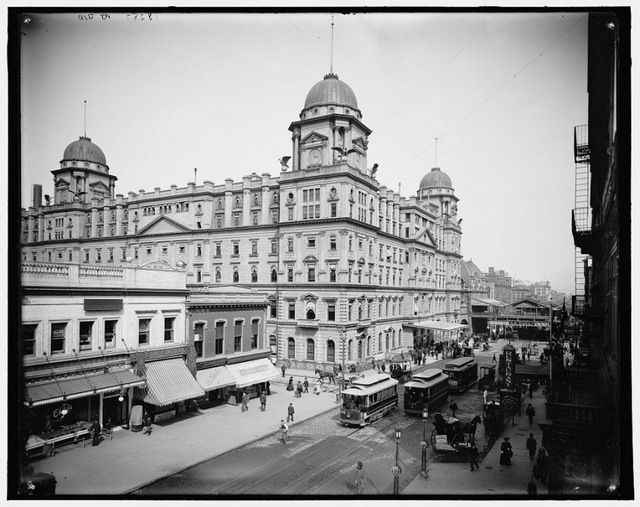
The earlier Grand Central Station. Photo via Library of Congress.
To uncover more interesting facts and secrets of Grand Central, join our Secrets of Grand Central Terminal Walking Tour!
Tour of the Secrets of Grand Central Terminal
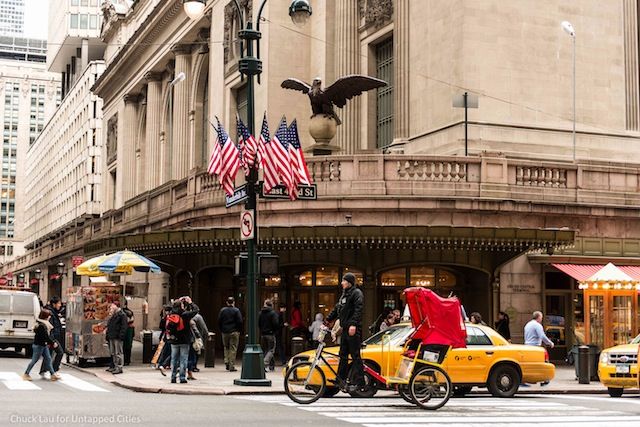
In addition to their patriotic appearance, the eagles were imposing figures with a wingspan of over 13 feet and weighed in at about 4,000 pounds. With their intimidating stance, they loomed over the streets of Manhattan up until the station’s razing in 1902 for the development of today’s Grand Central Terminal. Since then, these massive winged models have been dispersed throughout the city and the state, finding themselves placed atop some of the city’s less notable sights, as well as a few unexpected places.
Many of the eagles were auctioned off to institutions and private estates all throughout the New York region, though not going as far as the 22 eagles of Penn Station. Nevertheless, some of these estates became the subject of division and redevelopment, leading to the eagles’ neglect, and they were further dispelled around the region.
After some time uncharted, individuals interested in the whereabouts of the eagles began tracing their resting places, and although some were found, others still remain at large.Photographer David McLane had located 9 of the Grand Central eages by the time of his death in 1986. Railroad historian David Morrison, who also has been tracking down the Penn Station eagles, was responsible for getting one back to Grand Central. Here is a rundown of where the existing ones are.
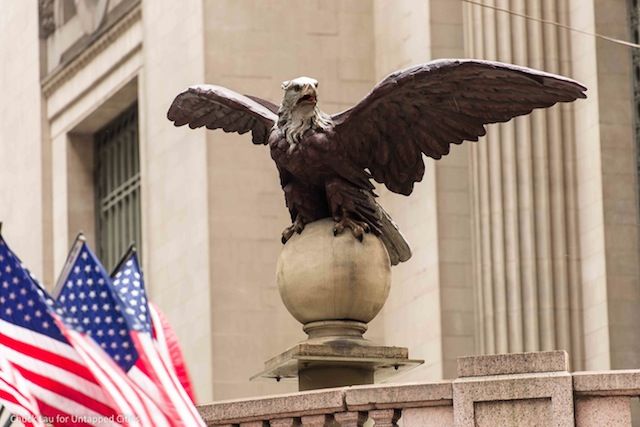
Two of the lost eagles were donated to the Metropolitan Transit Authority. They underwent a pricey restoration process and were eventually incorporated into the current Grand Central Terminal‘s structure, where they now stand somewhat nostalgically. One of these eagles, which once overshadowed a cluster of azalea bushes in a private Bronxville backyard, now soars atop the Lexington Avenue entrance to the Grand Central Market. The other,
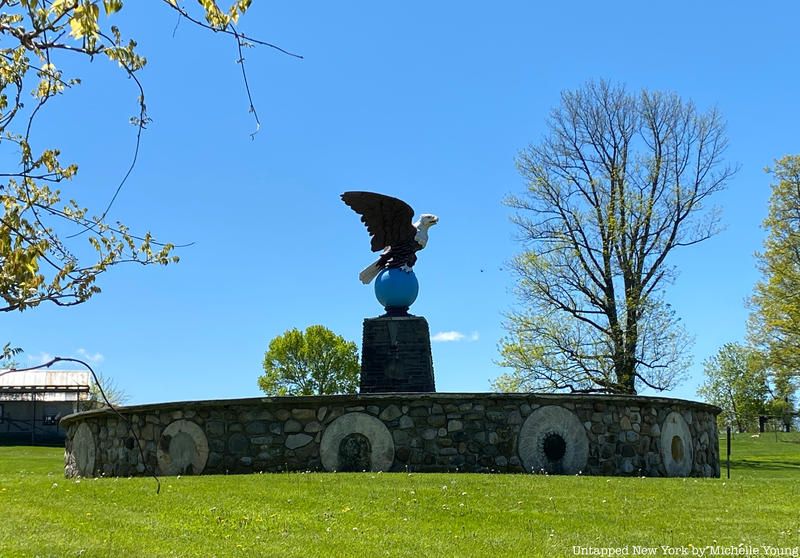
Another eagle, which now belongs to the Space Farms Zoo and Museum in Sussex, NJ, can be seen atop its extravagant pedestal.
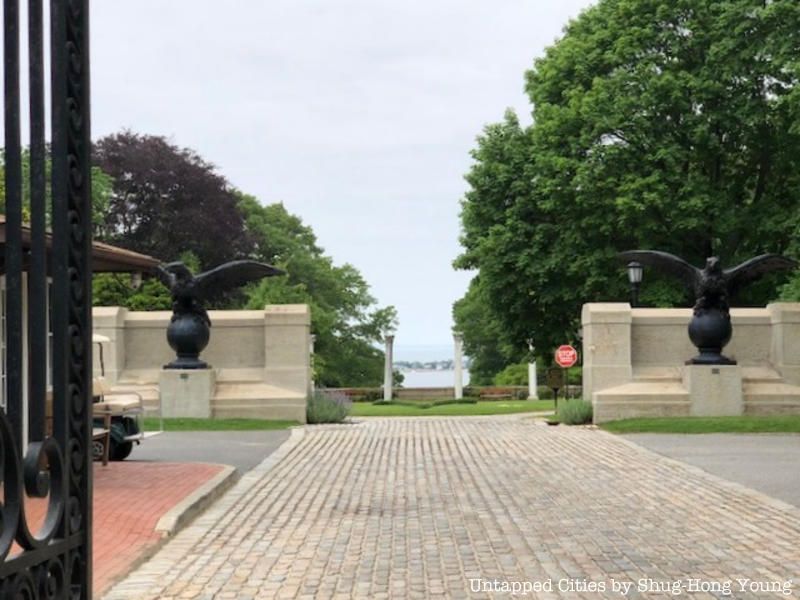
Two other eagles now highlight the entrance to the Suffolk County Vanderbilt Museum Mansion. Here they greet visitors of the beautiful Spanish Revival mansion in Centerport, on the North Shore of Long Island.
rescued from a Franciscan Friar’s monastery in Garrison, NY, was installed above the terminal’s southwest entrance at 42nd Street and Vanderbilt Avenue.
Not far from the Vanderbilt Estate, rests another eagle in King’s Point, Long Island in the private estate of the late Edwin S. Marks.
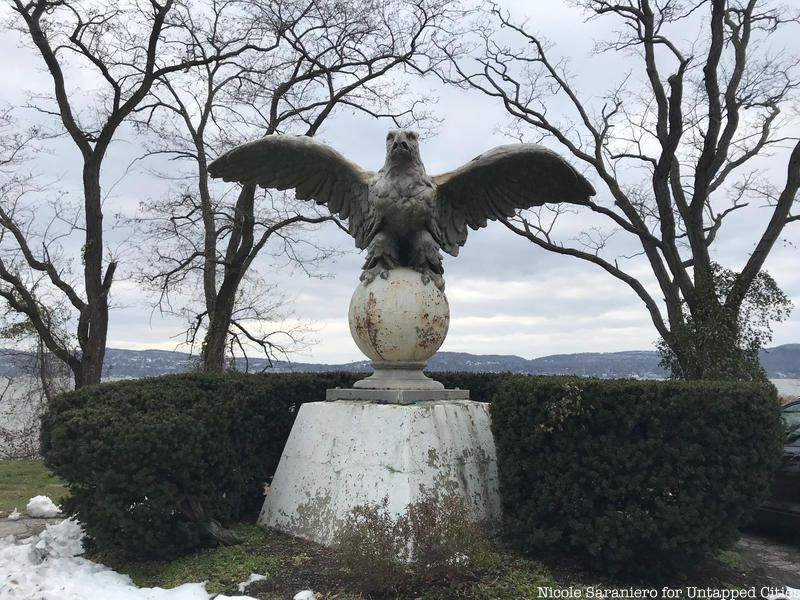
Another Grand Central eagle be found by the Hudson River at Philipse Manor in Sleepy Hollow.
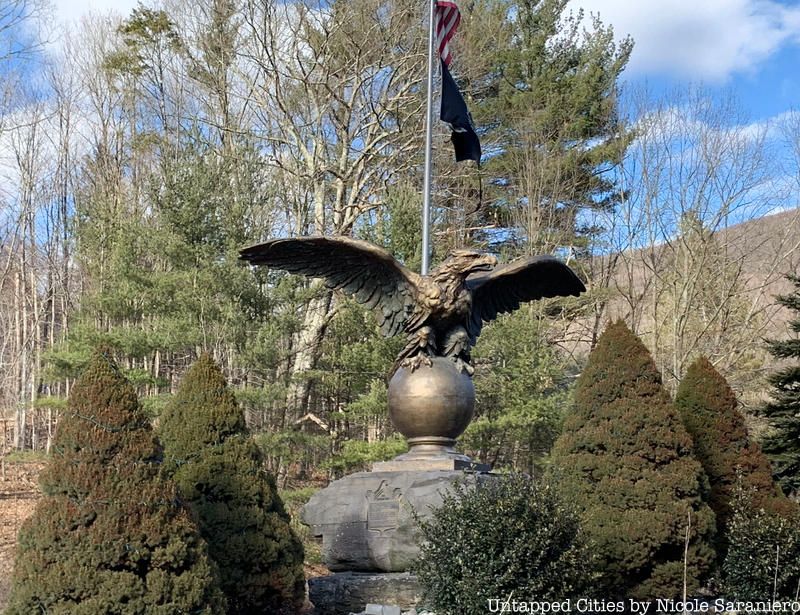
The Shandaken or Phoenician Eagle can be found at the entrance to Phoenicia, NY on Route 28 at the intersection of Route 214. Here the eagle has been adopted to represent the city. It’s patron is David McClane, one of the enthusiasts tracking down the eagles of Grand Central and it’s relocation here was funded by a committee in Phoenicia at the cost of $10,000. Installed in 1986, an accompanying time capsule was buried next to it, to be opened in 2076.
Though their settlement remains more elusive than others, the remaining discovered eagles can be found on landmarks across New York state. Two of these lie at the Saint Basil Academy in Garrison.
Though other eagles are believed to be adrift, those which have been discovered can be viewed as historical remnants of what was once a stage of the evolution of New York City’s eminent terminal. It is unknown whether or not there are any organizations or individuals currently in search of these eagles, but perhaps in the future, whatever eagles remain will resurface. Until then, we can catch a glimpse of these urban relics adorned on their more contemporary home of today’s Grand Central Terminal.
To find out more about the many secrets of New York City’s Grand Central Terminal, check out our Secrets of Grand Central Terminal where we explore all aspects of the terminal and joins our Secrets of Grand Central Terminal Walking Tour!
Tour of the Secrets of Grand Central Terminal
Next check out, Where Are the 22 Eagles of the Original Penn Station? Get in touch with the author: @Brennan_NYC
Subscribe to our newsletter